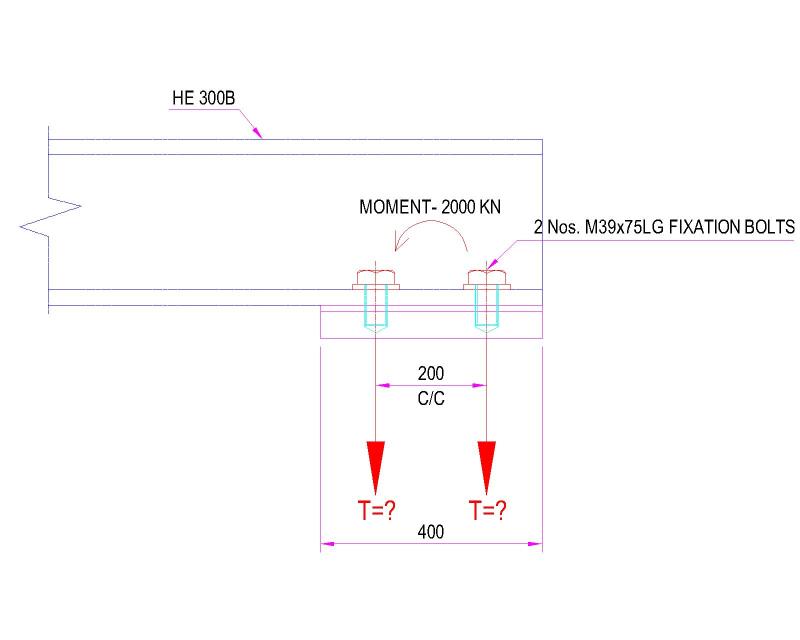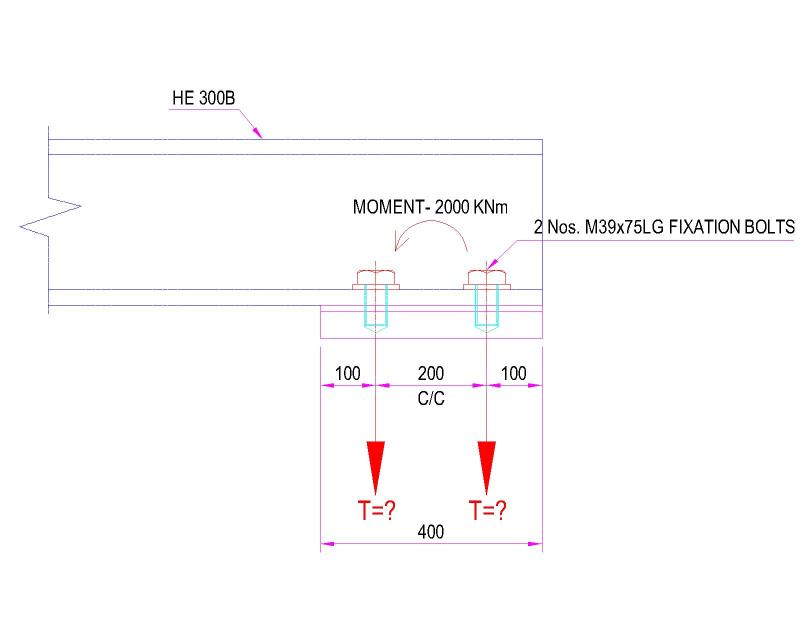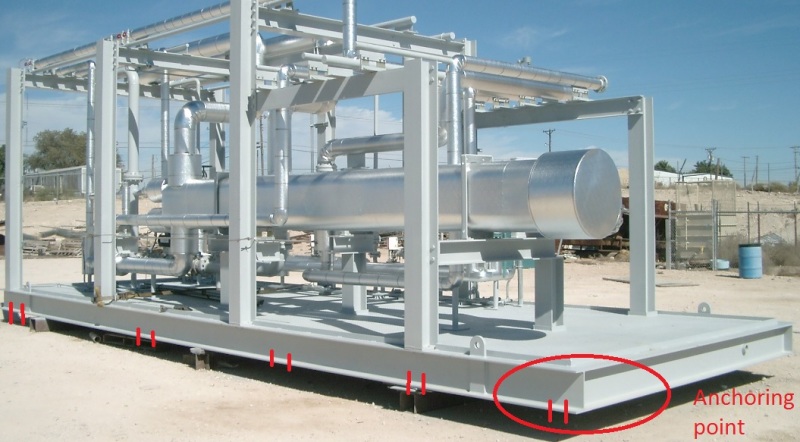anupriya123
Structural
Im designing a Anchor bolt for skid base. There is a moment in the anchoring location.
How to convert the moments into tension force. I have attached the image. Please help.

How to convert the moments into tension force. I have attached the image. Please help.



